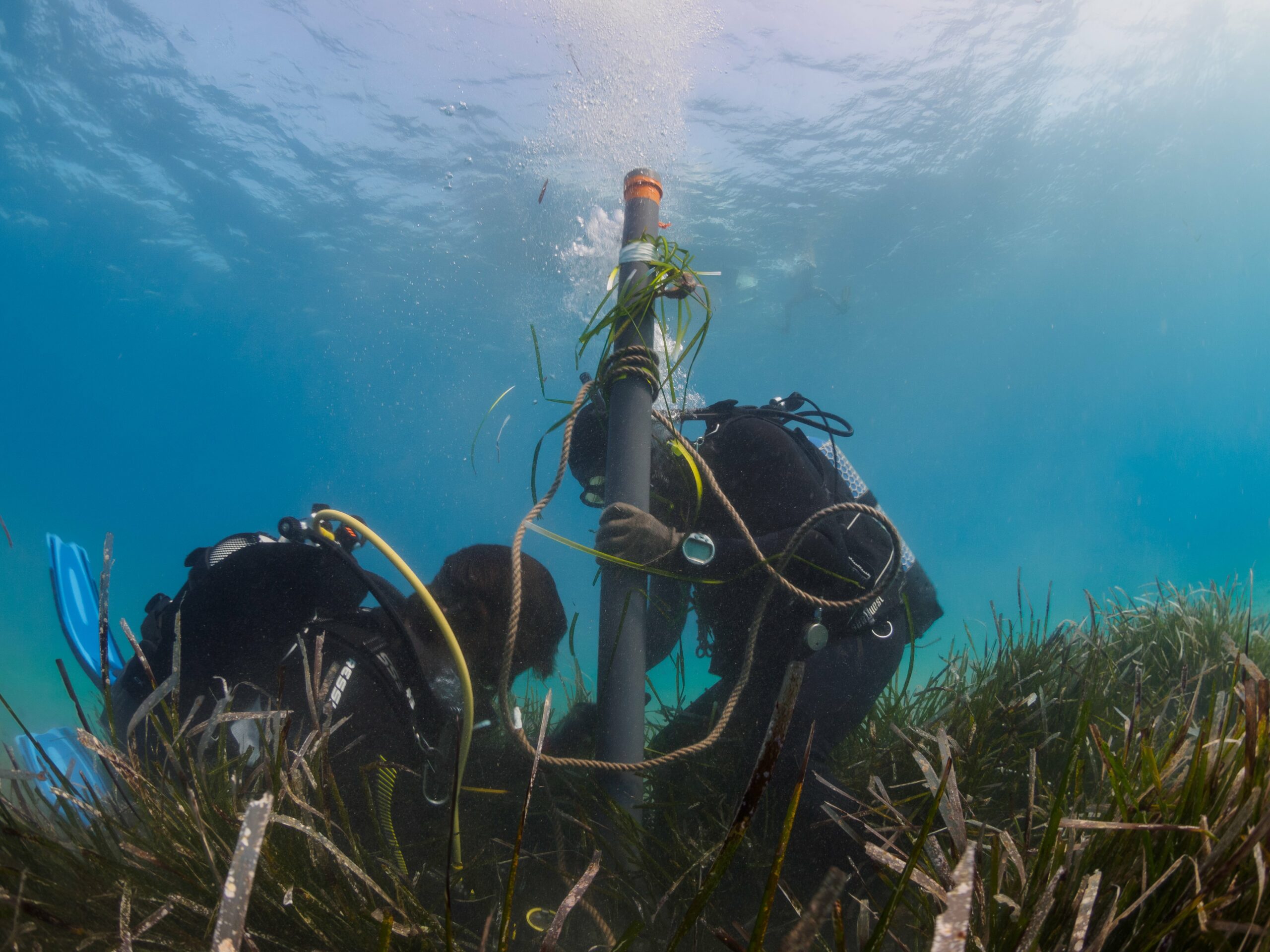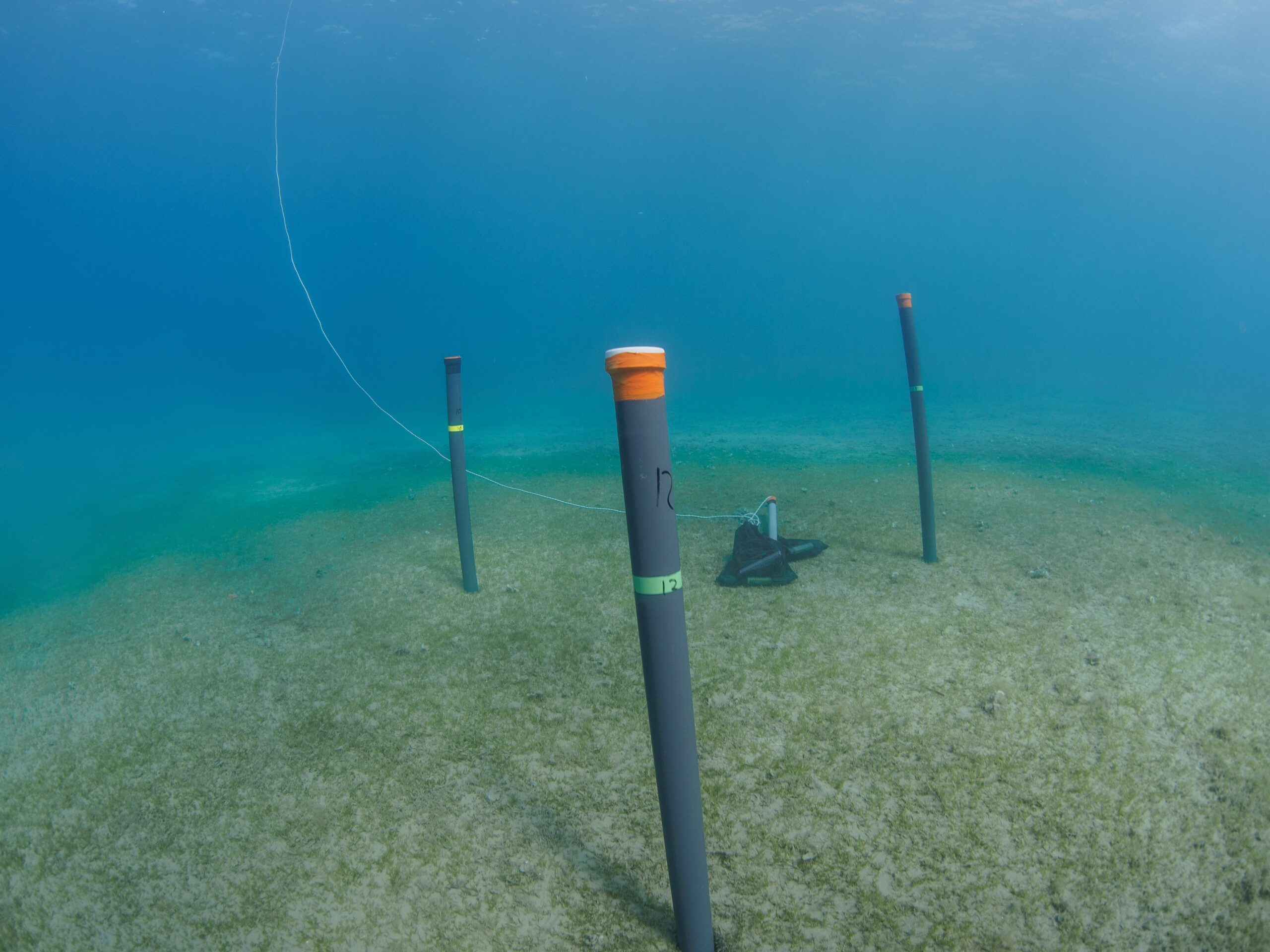
©️ Thanos Dailianis
Field and monitoring activities have begun at the ARTEMIS pilot sites, and the excitement is palpable. Recently, in the picturesque bay of Atzikiari, Sitia, Crete, the dedicated team from the Hellenic Centre for Marine Research (HCMR) embarked on crucial fieldwork. Their mission ? To gather essential data on the CO2 storage capacity of Posidonia Oceanica.
Posidonia oceanica, often referred to as the ‘Lungs of the Mediterranean’, plays a vital role in marine ecosystems. These underwater meadows are not only biodiversity hotspots but also significant carbon sinks, helping to mitigate the effects of climate change by sequestering CO2. Understanding the carbon storage capacity of these meadows is crucial for shaping conservation strategies and informing policy decisions. The HCMR team, including researchers and marine biologists Eugenia Apostolaki, Catalina A. Garcia-Escudero, Pavlos Efthymiadis, Thanos Dailianis and Julius Glampedakis, have adopted manual coring techniques to extract sediment samples from Posidonia oceanica meadows and areas where these meadows have been lost most likely due to fish farming activities and have since been populated by the non-indigenous seagrass species, Halophila stipulacea.
This work aims to build a baseline of the ecosystem services provided by the pilot site. The next steps involve laboratory analysis to measure the stocks (kg m-2) and the accumulation rates (g m-2 yr-1) of organic carbon of the seagrass meadows at the pilot site.
The ARTEMIS project, a cornerstone of the Interreg Euro-MED Programme Natural Heritage, is a beacon of hope for marine conservationists. Its primary goal is to accelerate the restoration of seagrass meadows in the Mediterranean, leveraging innovative solutions rooted in ecosystem services.
The pilot site in Crete is just one of the four pilot sites of the Artemis project.

©️ Thanos Dailianis


